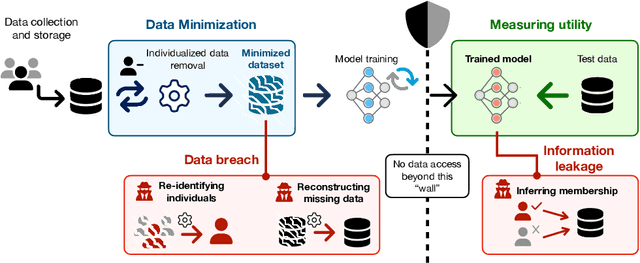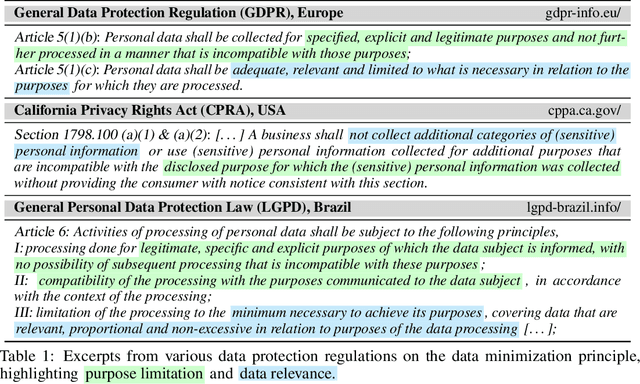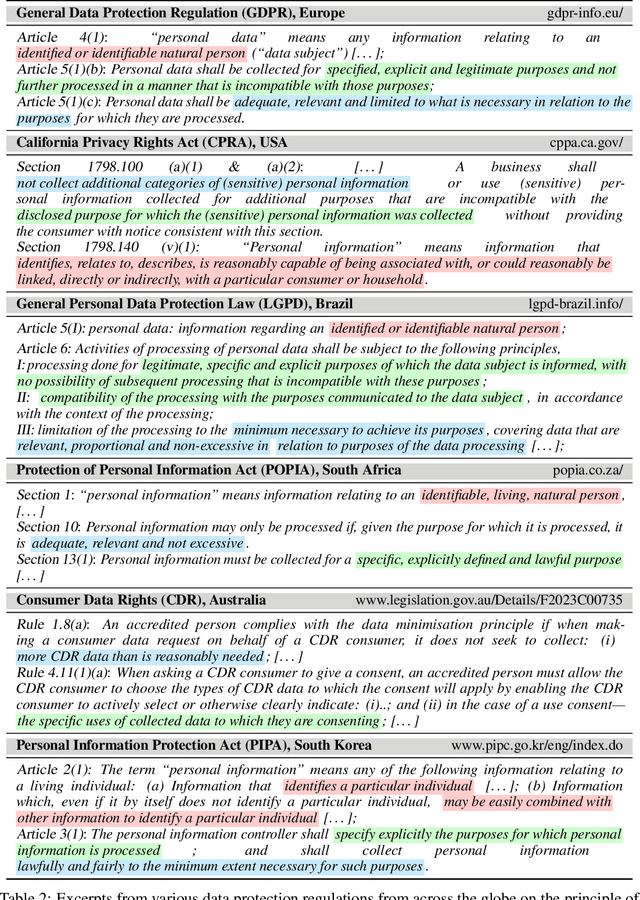The Data Minimization Principle in Machine Learning
Paper and Code
May 29, 2024



The principle of data minimization aims to reduce the amount of data collected, processed or retained to minimize the potential for misuse, unauthorized access, or data breaches. Rooted in privacy-by-design principles, data minimization has been endorsed by various global data protection regulations. However, its practical implementation remains a challenge due to the lack of a rigorous formulation. This paper addresses this gap and introduces an optimization framework for data minimization based on its legal definitions. It then adapts several optimization algorithms to perform data minimization and conducts a comprehensive evaluation in terms of their compliance with minimization objectives as well as their impact on user privacy. Our analysis underscores the mismatch between the privacy expectations of data minimization and the actual privacy benefits, emphasizing the need for approaches that account for multiple facets of real-world privacy risks.
 Add to Chrome
Add to Chrome Add to Firefox
Add to Firefox Add to Edge
Add to Edge